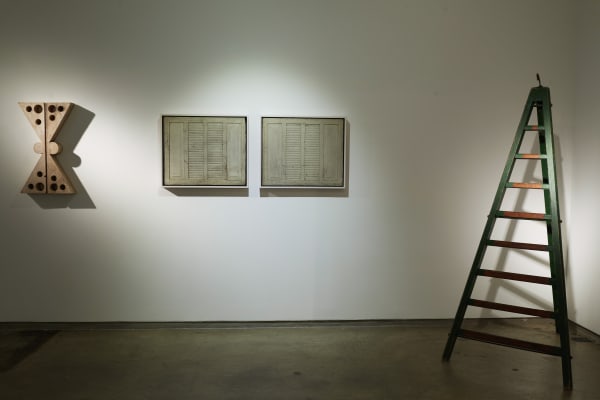Formed with Function: Gallery One
(Extended through April 22)
Decades ago, at an art and antiques fair, I purchased two large, corrugated wood panels made in the early 20th century, measuring 4 x 8 ft. each. Painted army duck green, they were beautifully constructed in an almost dovetailed kind of way: each individual undulating segment perfectly integrated into the next. I was struck by their elegant starkness and by the fact that they seemed out of place in this mostly antique venue. They had the best qualities of modern minimalism, but of course that was not the intention of their maker—who undoubtedly created them with a specific purpose in mind. I loved viewing them out of context, and out of context they will once again be presented.
Formed with Function is conceived as a sequel to Ricco/Maresca’s show titled Chance (December 1991 - January 1992), which was an exploration of the found object as art—an interest of our gallery since the 1980s that continues to this day. In this show, my focus is not so much the classic objet trouvé—that which becomes art by chance—but objects that were created with a functional purpose in mind, and whose aesthetic qualities both enhance and transcend it.
Being a life-long champion of vernacular art, as well as an admirer of industrial design, the term fine art has always been puzzling to me. The main function of the “fine” designation seems to be promoting a certain way of looking, one that favors academia and the traditional discourse of art history to the exclusion of all else. I don’t think that industrial design should occupy a back seat in the art world—whether it’s a locomotive by Raymond Loewy, a beautifully designed can opener by OXO, or an artist-designed piece of furniture. The creative effort that goes into manufactured objects of universal appeal is, I believe, no less than that of “fine” artists.
Formed with Function brings together a group of exceptional objects with various utilitarian sensibilities. Among them: an early 20th century Amish apple-picking ladder; a mysterious German kindergarten finger-counting aid (ca. 1910-20); an American shooting range cut-steel target in the form of a “bad guy” (ca. 1950s); a Metropolis-like hat steaming aluminum head form (ca.1920s); the most beautiful bentwood hay fork I’ve ever seen (having 9 tines); a monumental Bakelite propeller used to mix industrial liquids; a painted picnic table that folds up and hangs on the wall, offering an arresting graphic, and a prison-made double-window picture frame (the inscription on the reverse reads Jackson Penitentiary, Michigan, 1890) made from 5,178 pieces of wood by H.A. Goode—which sadly never fulfilled its original purpose.
- Frank Maresca
Click here to visit the online viewing room for this show and learn more about the works exhibited.




